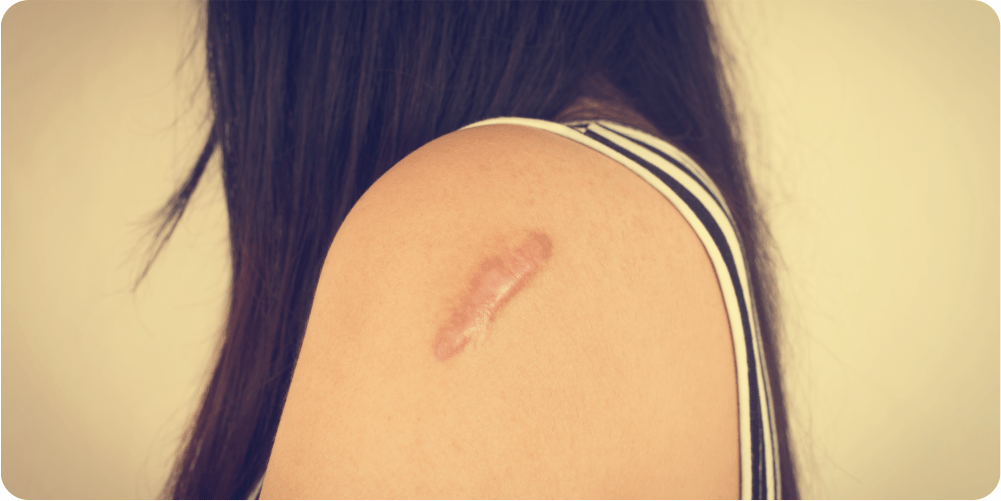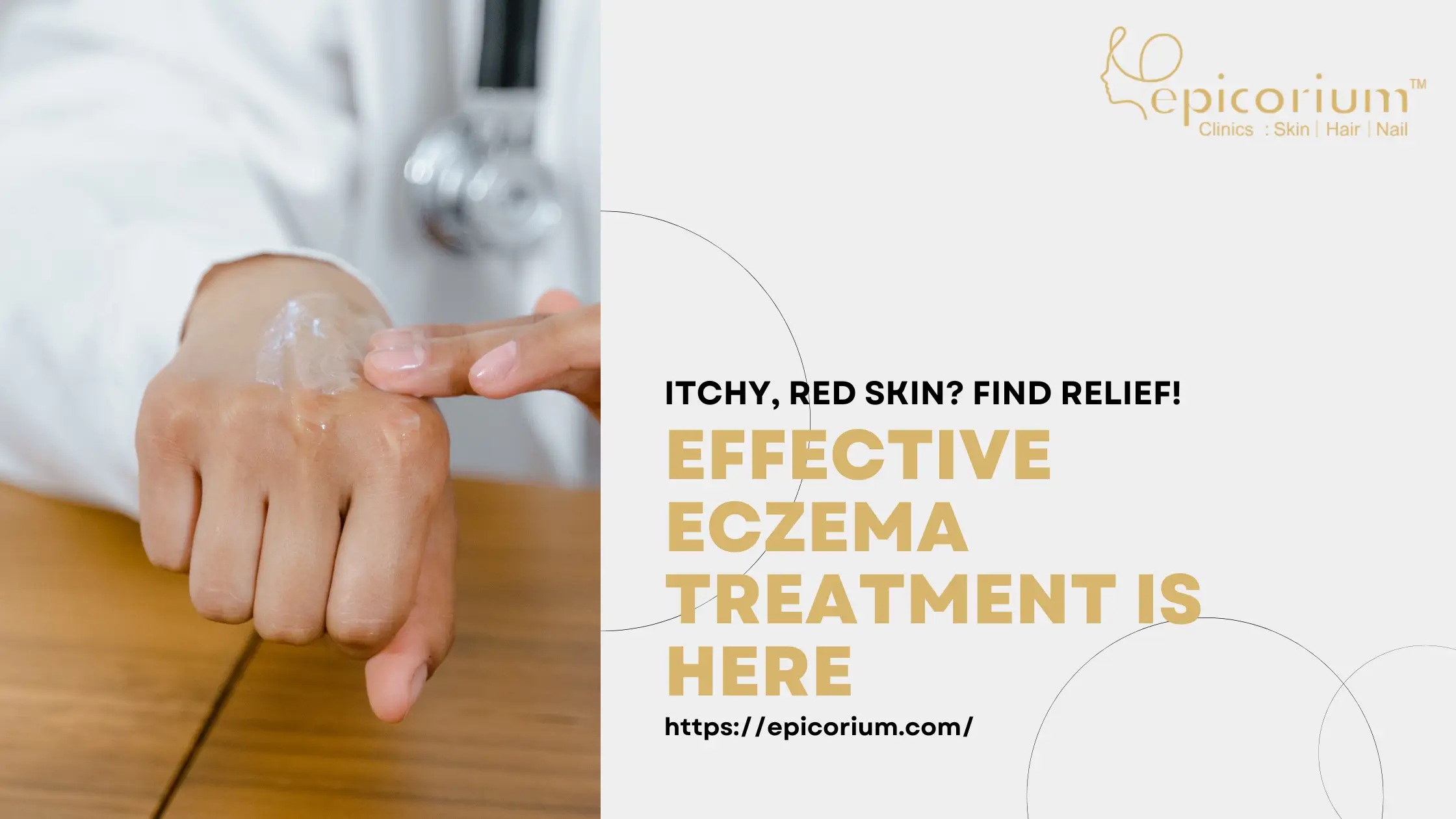
What does scar mean?
The body’s natural method of repairing and replacing lost or damaged skin is to leave a scar. Fibrous tissue frequently makes up scars. Scars can develop for a variety of reasons, including infections, surgery, traumas, or tissue inflammation. Anywhere on the body, a scar can develop, and its structure might differ, appearing flat, lumpy, sunken, or coloured. The scar could hurt or itch. The final appearance of a scar is influenced by a number of variables, including the person’s age, nutritional state, skin type, where the scar is on the body, and the direction of the incision.
What is Scar Revision Surgery?
Scar Revision Surgery is a cosmetic surgical treatment used to make scars look better and help them blend in with the healthy skin around them. Surgery for scar correction leaves some residual scars. They become less obvious and subtle as a result.
Read MoreWhat does scar mean?
The body’s natural method of repairing and replacing lost or damaged skin is to leave a scar. Fibrous tissue frequently makes up scars. Scars can develop for a variety of reasons, including infections, surgery, traumas, or tissue inflammation. Anywhere on the body, a scar can develop, and its structure might differ, appearing flat, lumpy, sunken, or coloured. The scar could hurt or itch. The final appearance of a scar is influenced by a number of variables, including the person’s age, nutritional state, skin type, where the scar is on the body, and the direction of the incision.
What is Scar Revision Surgery?
Scar Revision Surgery is a cosmetic surgical treatment used to make scars look better and help them blend in with the healthy skin around them. Surgery for scar correction leaves some residual scars. They become less obvious and subtle as a result.
Any person’s skin is their most exposed and obvious bodily feature. Humans desire flawless, flawless skin, yet even the most flawless skin can be ruined by an unattractive scar!
Since scars are a result of damage or surgery, they can appear anywhere on the human body. Because every injury and procedure is unique and because there are numerous other factors at play, it is unpredictable how big the scars will be, as well as their colour or type. Patients are typically unhappy with the way a scar looks, regardless of how it formed—whether as a result of an accident or surgery.
Are Scars a Permanent Mark?
Scars are unavoidable traces left behind by the healing of a wound.
Generally speaking, some scars flatten out with age and practically disappear into the surrounding skin.
This isn’t necessarily true for all kinds of scars, though. Considering that many scars are permanent in nature and do not morph over time.
Risks Involved
Even though scar revision is a technique that is frequently performed and the hazards are quite uncommon, it is crucial to be aware of these concerns and to discuss them with your surgeon before the procedure. Like with other procedures, there is a chance for complications, some of which include bleeding, infection, and negative anaesthetic reactions.
According to your cosmetic surgeon’s pre- and post-operative instructions, you can reduce some risks. Your surgeon will provide you precise preparation instructions after the surgery date has been determined. There are rules on what is acceptable to consume, what is not, and what medications and vitamins to take. If you smoke, it is strongly advised that you give up the habit both before and after surgery. We advise you to make arrangements for a ride home following surgery and post-op care until you feel better.
Before undergoing scar correction, a number of issues should be taken into account, including:
Unrealistic expectations among patients
It’s crucial to make sure the patient understands that scar revision will only improve the scar, not completely remove it, and that it can take several operations and adjunct therapies to achieve the best results over the course of many months or years.
Revision of scar time
It takes a scar about 12 to 18 months to grow and reach the tensile strength of 70 to 80 percent of healthy skin due to ongoing collagen remodelling. Scar revision outcomes are bad for immature scars because they are more likely to develop hypertrophy. During this time, further therapies including the use of silicone sheets and intralesional steroid injections can be administered. If early intervention is necessary, it is best to wait until after 8 to 12 weeks in adults and 6 months in kids under the age of 7.
Nutritional status and patient’s medical background
For healthy protein synthesis, a diet that is well-balanced is necessary. Zinc, vitamin A, C, and E promote wound healing. Before having a scar revision, herbal supplements and medications that cause bleeding should be stopped three days to two weeks in advance. Wound healing is adversely affected by medical disorders like diabetes mellitus and immunosuppression.
Tobacco
Use of tobacco slows wound healing, induces hypoxia, thrombogenesis, vasoconstriction, and abnormal cell function. It is ideal for individuals to stop smoking 4 weeks prior surgery and 4 weeks following scar repair.
Kind of Scars
Keloid Scars
When the body continues to create the stiff, fibrous protein known as collagen after a cut has healed, keloid scars develop. As a result, the edges of the wound or incision may get obscured by a thick, puckered, and irritating cluster of scars that are frequently red or deeper in colour than the surrounding skin.
Steroid injections are frequently used as the initial treatment for keloid scars to shrink them. Surgery can be used to erase scars if injections are ineffective. Typically, this is done as an outpatient surgery while receiving local anaesthetic. Your stitches will be taken out a few days after surgery, and you should be able to return to work in a day or two.
It is crucial to remember that keloid scars may return larger and more obvious than before, even after therapy. Your surgeon, however, may employ specific techniques to prevent this, such as putting or injecting steroids into the scar or giving radiation treatment. It could also be advised to wear a pressure garment for a year or longer.
Hypertrophic Scars
Hypertrophic scars, which extend beyond the edge of the wound or incision, are red, elevated, and thick.
With time and steroid treatments or injections, hypertrophic scars frequently become better on their own without medical intervention. Surgery may be used to remove them if they do not improve with steroid therapy. Your plastic surgeon will do this surgery to reduce the visibility of the scar by removing extra tissue and moving the incision. Depending on the procedure, either local or general anaesthesia may be used.
Your surgeon may inject steroids into the scar during surgery to prevent the scar from reappearing. In some circumstances, getting steroid injections for up to two years following surgery may also be advised.
Incision scars
Contracture scars can develop when a sizable portion of skin is burned, causing the skin to draw together and pucker. The scar may make the muscles and tendons nearby less mobile.
Scar Revision Techniques:
Skin Grafting
Typically used to repair more severe scars, such as contractures and other scars from burns, skin grafting is a challenging surgical technique. It entails covering the wounded area with skin that has been removed from a healthy section of the body (the donor site). Grafts are frequently obtained from fatty tissues, such the thigh; for scars that are more extensive, grafts may be required from many locations.
Skin grafting can significantly enhance a damaged area’s functionality. It’s crucial to remember that transferred skin can not exactly match the surrounding skin’s colour and texture.
Flap Surgery
Flap surgery is a sophisticated surgical operation in which the skin is transferred from a healthy portion of the body to the wounded area together with the underlying fat, blood vessels, and occasionally the muscle. In some flaps, the blood supply is still connected at one end to the donor site; in other flaps, microvascular surgery is used to reconnect the flap’s blood arteries to the vessels at the new site.
An area that has been scarred can function much better after flap surgery. The transferred skin might not, however, be an exact match for the surrounding skin in terms of colour and texture. In general, flap surgery outperforms skin transplants in terms of aesthetic results.
Z-Plasty
Z-plasty is a surgical procedure that reduces the visibility of a scar by altering its orientation so that it more closely resembles the skin’s natural creases and wrinkles. The previous scar is removed during this treatment, and tiny triangular flaps of skin are formed on either side by new incisions. The flaps are then repositioned to cover the wound from a new angle, creating a “Z” pattern on the scar. Fine stitches are used to close the wound, and they are removed a few days later.
Z-plasty is typically done under local anaesthetic as an outpatient operation.
How is a scar correction treatment carried out?
Step 1 – Anaesthesia
For your comfort throughout the surgical procedures, medications are given. Local anaesthetic, intravenous sedation, and general anaesthesia are the options. The option that is ideal for you will be advised by your doctor.
Step 2: The remedy
The extent of your scarring, as well as the kind, size, and placement of the scar, will determine how much progress can be made with scar revision. Sometimes, a single strategy can result in a noticeable improvement. To get the greatest results, your plastic surgeon might advise combining several scar modification methods.
Step 3: To surgically remove the previous scar, which may be necessary for deeper scars, make an incision.
Step 4: Tapping off the incisions
Certain scars need multilayer closure. Where excision involves tissue below the skin’s surface or in regions with a lot of mobility, layered closure is frequently performed. Sub-dermal closure (below the skin’s surface) with absorbable or permanent sutures is necessary for the initial phase or layer. Closure of the residual surface wound follows the accumulation of further layers of closure.
Recovery
Each patient’s recovery is unique, and the healing process happens in stages.
You will be transported into a recovery area after the procedure and closely watched. The majority of outpatient operations allow patients to leave after a few hours. A brief hospital stay can be necessary for more complicated hospital treatments like skin grafting or flap surgery.
If your scar gets worse after surgery, don’t panic. It can take up to a year for it to start looking better.
Trust your skin with the best dermatologists at Epicorium!
FAQs
The best candidates for Scar revsion is if the appearance or texture of the scar can be improved.
Potential risks include bleeding, infection, seroma, pain, scarring, numbness, asymmetry, need for additional surgery. Your doctor will discuss these risks further during your consultation.
This procedure can usually be done as an outpatient. You will be sent home on pain medicine and antibiotics. Recovery time will depend on extent of scar revision.
Most activities of daily living can be resumed within a couple of days. It is important to get up and move around within a day of surgery to help decrease the chance of developing a blood clot. Strenuous activities should be avoided for about 1-2 weeks or until your doctor has given you clearance.



